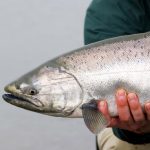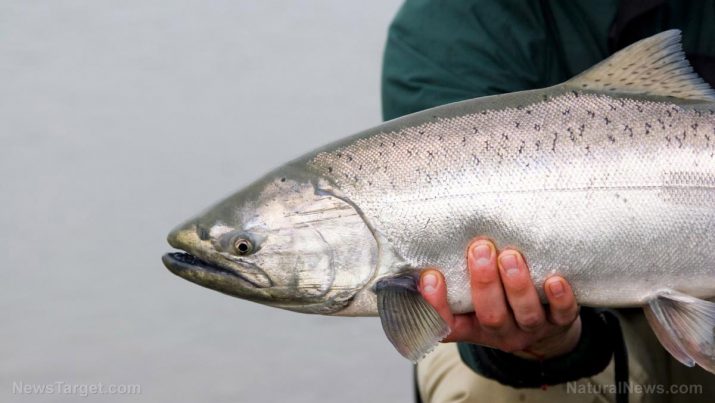
Here’s how to source your fish in the safest and most toxin-free way possible
Tuesday, August 07, 2018 by Ralph Flores
http://www.naturalnewstips.com/2018-08-07-heres-how-to-source-your-fish-in-the-safest-and-most-toxin-free-way-possible.html

Fish is, inarguably, one of the healthiest food sources available to us on this planet. Fatty fish, for one, are the best sources of omega-3 fatty acids, which help support brain and body functions and are linked to the prevention of many diseases. For people living in areas that receive limited sunlight, fish is the next best source of vitamin D.
However, where it comes from is another story: Many waters where fish are commercially farmed and harvested are rife with pollution and heavy metals. What’s worse, while the fish are regularly exposed to these dangers, the commercial use of pesticides and antibiotics on fish make them a health risk, instead of a health benefit.
One way to reduce your exposure to these dangers and ensure that you get safe, toxin-free fish: Stay away from farm-raised fish.
Unfortunately, the choice between wild-caught fish and farm-raised fish isn’t black and white: At best, it’s choosing the lesser of two evils, which makes non-farmed fish varieties just slightly better than the farmed counterparts. While the risk of mercury contamination is higher in wild salmon, tuna, and swordfish, its farm-raised variants are affected by run-off from land-based sources of pollution, given most farms are found on ocean shorelines. This means that farmed fish are exposed to things like agricultural run-off such as pesticides and herbicides, as well as polychlorinated biphenyls (PCB) and dioxins – persistent environmental pollutants that are highly carcinogenic.
In addition, most farmed fish are regularly pumped full of antibiotics to prevent diseases and pests – much like how “factory farmed” land animals are drugged to help them cope with living in cramped, unsanitary conditions. How the farms are managed is also a factor in why fish have more toxins compared to their wild-caught relatives. In India, for example, most farms are operated by people with little to no knowledge on the needs of the fish and the proper upkeep of the pond. All this leads to questionable practices in farm management, including poor nutrition (many farms in India use human waste or diseased fish in pellets) and the use of toxic chemicals.
It shouldn’t even be shocking at this point that a study has found that farmed fish carry more toxins than wild-caught. This trend is seen in the five most common farmed types, including salmon, sea bass, cod, catfish, and tilapia. In particular, the Atlantic salmon (Salmo salar) is part of this list, as most commercially available fish are raised in farms. (Related: Avoid eating these 11 types of fish to reduce your exposure to mercury.)
Reeling in fish to the table
Being well-informed about the environmental and health impacts of certain practices in fishing – and doing something about it – may seem like an insignificant thing. But if it’s done right, it can put pressure on fish and seafood providers to change their practices for the better. In the U.S., Washington state has recently taken steps to phase out farming Atlantic salmon by 2025, following growing calls from environmental groups in the area to stop the practice after a failure of a commercial net pen to contain farmed Atlantic salmon in the Pacific Ocean last year.
Some ways that you can start making smart and healthy choices include:
- Eating low on the food chain. Small fish – including sardines, anchovies, trout, fresh tilapia, and arctic char – contain less contaminant buildup than larger, predatory fish. In terms of sustainability, these fish reproduce quicker than big fish, which makes them recover quicker from the effects of overfishing. “This is the best general rule of thumb,” explained Carl Safina of the Blue Ocean Institute, an advocacy group. “The larger the fish grow to be, the more likely they are to be both depleted and carrying a higher load of chemicals.” If you’re a fan of predator fish, try limiting your consumption to once every two weeks.
- Buying Alaskan. It’s no secret that Alaska has one of the best-managed fisheries in the world, according to Safina. This means that the fish are not just sustainable, they’re also healthy. Some options to get you started include Alaskan salmon, halibut, and sablefish.
- Expanding your diet. Going for an unfamiliar fish or seafood on the menu isn’t just an adventure for your taste buds. It actually reduces your exposure to contaminants found in a particular species.
- Knowing your fish. For the most part, it pays to learn which fish are healthy and which ones you should avoid. The Blue Ocean Institute, for one, has a handy list that tells you which fish are safe to eat, which ones are overfished, and which ones are riddled with mercury.
Learn more about the effects of mercury in fishing sustainability by following MercuryScienceNews.com today.
Sources include:
Tagged Under: Tags: badfood, clean food, contaminated fish, contamination, dangerous chemicals, environment, farmed fish, fish, fisheries, food choices, food safety, food supply, Heavy metals, how-to, mercury, ocean health, sustainable fishing, tips, toxic chemicals, toxic elements, toxic ingredients, toxins





